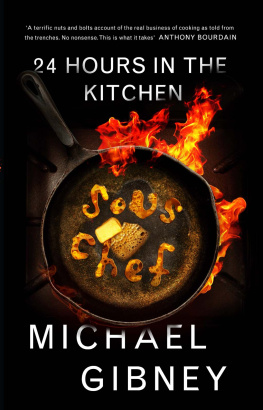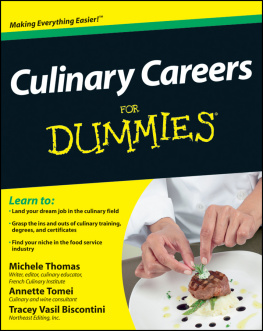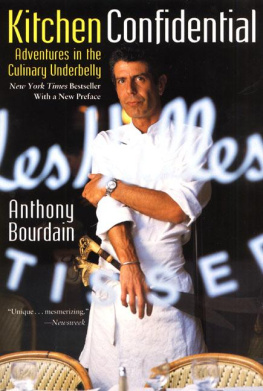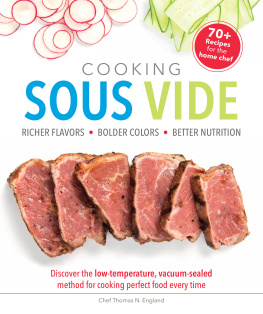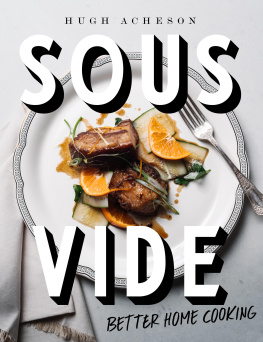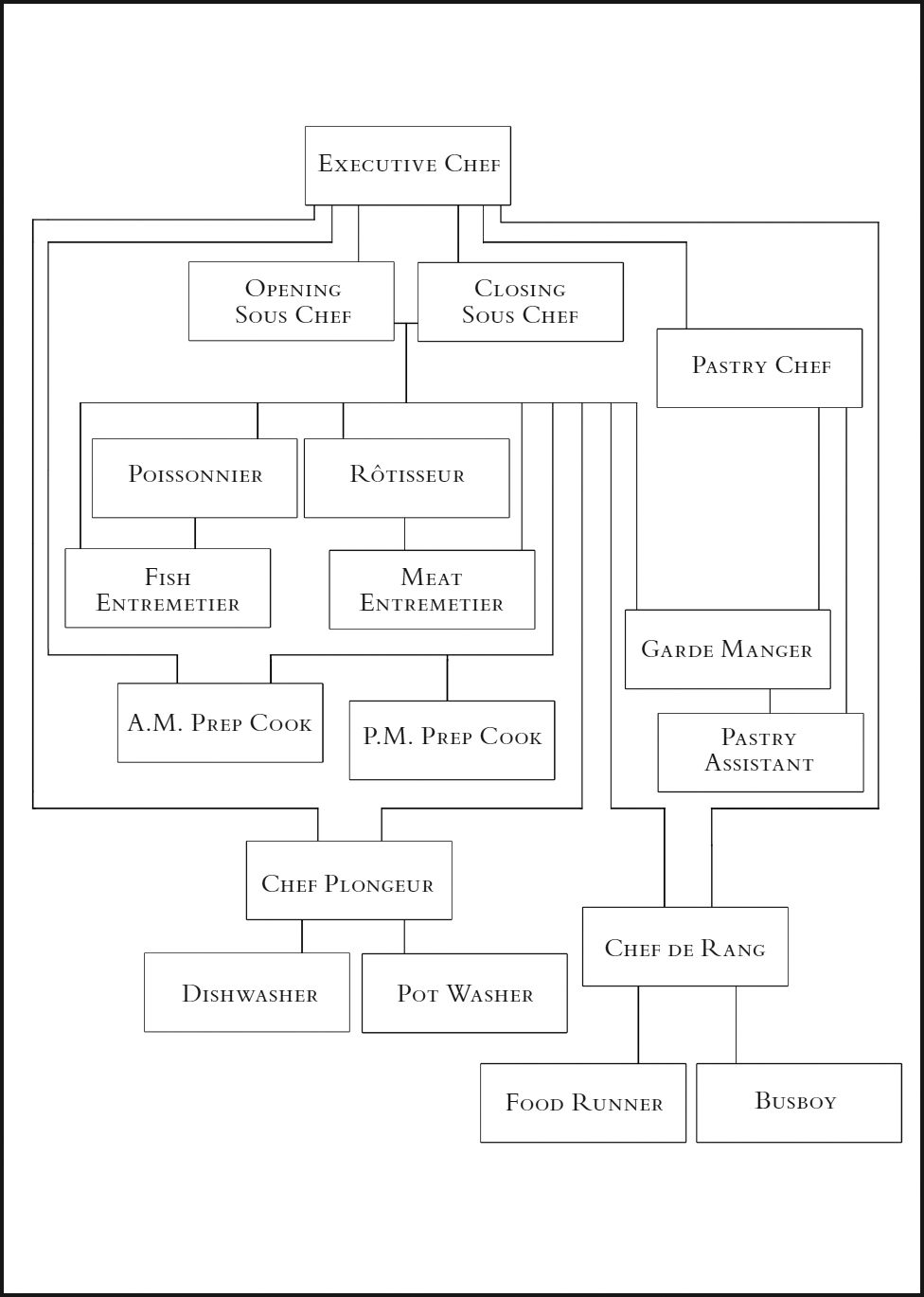Michael Gibney - Sous Chef: 24 Hours on the Line
Here you can read online Michael Gibney - Sous Chef: 24 Hours on the Line full text of the book (entire story) in english for free. Download pdf and epub, get meaning, cover and reviews about this ebook. year: 2014, publisher: Ballantine Books, genre: Detective and thriller. Description of the work, (preface) as well as reviews are available. Best literature library LitArk.com created for fans of good reading and offers a wide selection of genres:
Romance novel
Science fiction
Adventure
Detective
Science
History
Home and family
Prose
Art
Politics
Computer
Non-fiction
Religion
Business
Children
Humor
Choose a favorite category and find really read worthwhile books. Enjoy immersion in the world of imagination, feel the emotions of the characters or learn something new for yourself, make an fascinating discovery.
- Book:Sous Chef: 24 Hours on the Line
- Author:
- Publisher:Ballantine Books
- Genre:
- Year:2014
- Rating:5 / 5
- Favourites:Add to favourites
- Your mark:
Sous Chef: 24 Hours on the Line: summary, description and annotation
We offer to read an annotation, description, summary or preface (depends on what the author of the book "Sous Chef: 24 Hours on the Line" wrote himself). If you haven't found the necessary information about the book — write in the comments, we will try to find it.
Told in second-person narrative, Sous Chef is an immersive, adrenaline-fueled run that offers a fly-on-the-wall perspective on the food service industry, allowing readers to briefly inhabit the hidden world behind the kitchen doors, in real time. This exhilarating account provides regular diners and food enthusiasts alike a detailed insiders perspective, while offering fledgling professional cooks an honest picture of what the future holds, ultimately giving voice to the hard work and dedication around which chefs have built their careers.
In a kitchen where the highest standards are upheld and one misstep can result in disaster, Sous Chef conjures a greater appreciation for the thought, care, and focus that go into creating memorable and delicious fare. With grit, wit, and remarkable prose, Michael Gibney renders a beautiful and raw account of this demanding and sometimes overlooked profession, offering a nuanced perspective on the craft and art of food and service.
Advance praise for Sous Chef
A terrific nuts-and-bolts account of the real business of cooking as told from the trenches. No nonsense. This is what it takes.Anthony Bourdain
Michael Gibneys you-are-there Sous Chef is one of the most informative, funny, and transparent books about the restaurant biz ever written.Bret Easton Ellis
This is excellent writingexcellent!and it is thrilling to see a debut author who has language and story and craft so well in hand. Though I would never ask my staff to read my own book, I would happily require them to read Michael Gibneys.Gabrielle Hamilton, author of Blood, Bones & Butter
Sous Chef is a marvelous, superbly written, intelligent, and accomplished book. I know no other book that so vividly renders the experience and complexity of life in a big restaurant kitchen. The sheer amount of knowledge demonstrated here of the particulars of cooking is immense, and the dynamic, seesaw relationship between chef and sous chef is especially well achieved. I was gripped by the authors culinary passion and literary sophistication. Bravo!Phillip Lopate
A good cook chooses ingredients carefully, just as a writer must select the right words. Michael Gibney is a word cook of the highest order, and this book will leave you licking your fingers.Gary Shteyngart
Gibney is as skilled with words as he is with his 11-inch Sujihiki knife.Publishers Weekly (starred review)
Sumptuously entertaining fare . . . [Gibney] breathes life into the mix of outsized personalities inhabiting the confined, hot, noisy space of the kitchen.Kirkus Reviews (starred review)
Michael Gibney: author's other books
Who wrote Sous Chef: 24 Hours on the Line? Find out the surname, the name of the author of the book and a list of all author's works by series.

